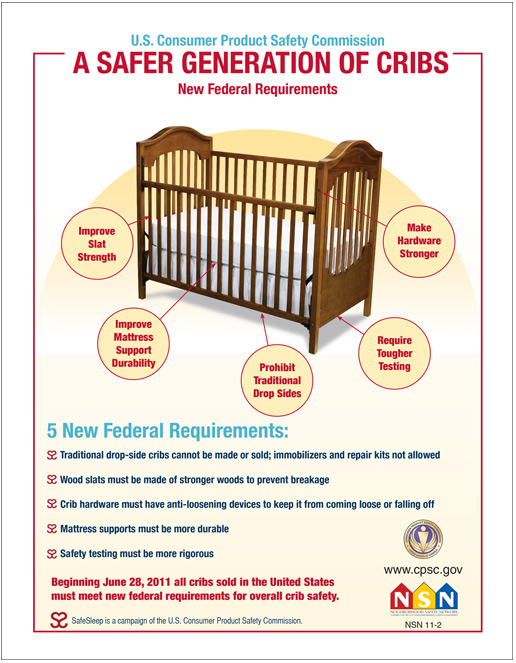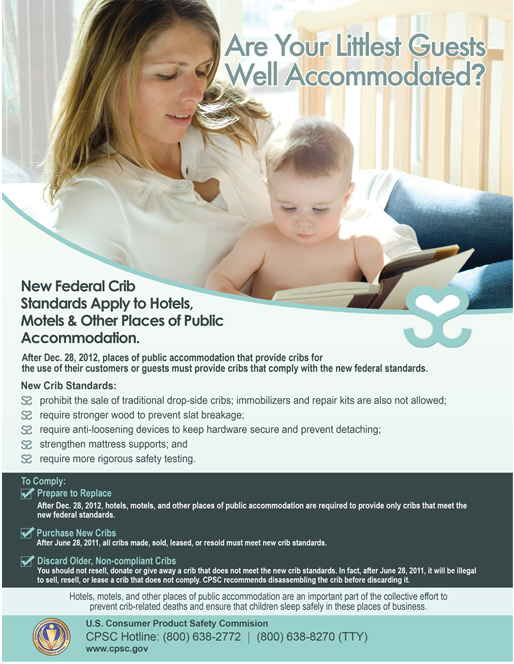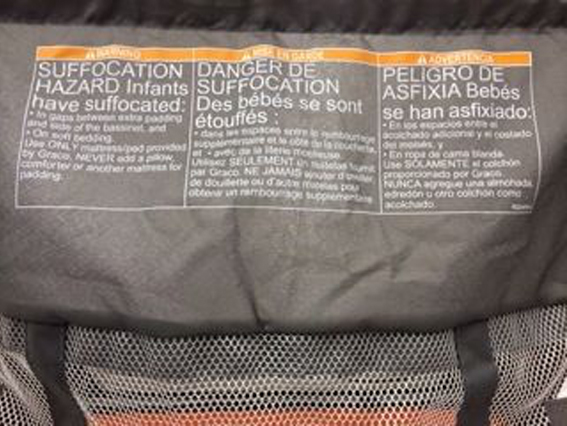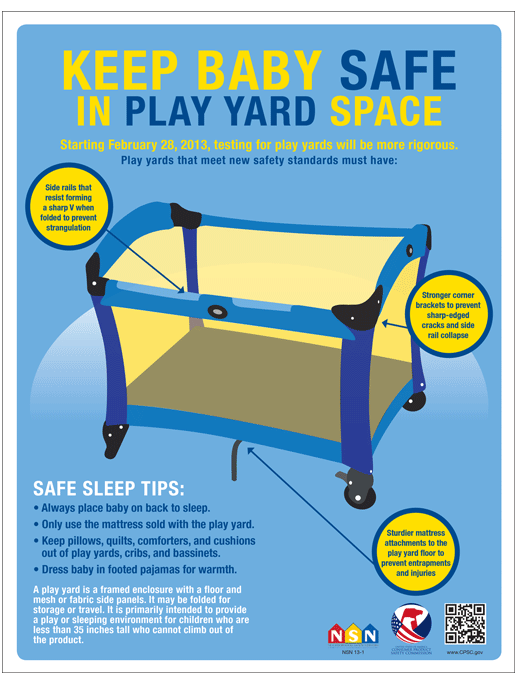Crib Safety
- Be sure you have a crib that meets all the new federal crib safety regulations (established by the U.S. Consumer Product Safety Commission in 2011). Find more information on current crib laws here.
- Always fill out and return the Product Registration Card to be notified personally if a product is recalled or has a safety defect.
- Check the crib regularly to make sure there are no loose or missing parts. Use only manufacturers’ recommended parts.
- The safest place for your baby to sleep is alone, in his/her own crib, in your room.
- Always place your baby to sleep on his/her back.
- Remove all soft items from the crib including traditional crib bumpers, pillows, blankets, comforters and toys. Bare is Best!
- Never place a baby on a waterbed, sofa, soft mattress, pillow, or other soft surface to sleep.
- Never use a sleep positioner.
- CPSC strongly warns all parents and caregivers not to use padded crib bumpers. According to the CPSC, the risk of death from padded crib bumpers far outweighs any purported benefits.
- We advise parents and caregivers that the best practice for a safe sleep environment for children is a properly assembled crib with only an appropriately sized mattress and a snugly fitted sheet, and that parents should never place soft bedding or other padded objects such as padded bumpers, pillows, sleep positioners, stuffed animals, or cushions in a child’s crib, bassinet or play yard. When it comes to any child’s sleep environment, bare is best.
Infant Sleep Positioners
The CPSC and the FDA warn consumers to stop using infant sleep positioners. Over the past 13 years, CPSC and the FDA have received 12 reports of infants between the ages of 1 month and 4 four months who died when they suffocated in sleep positioners or became trapped and suffocated between a sleep positioner and the side of a crib or bassinet.
CPSC and the FDA are warning parents and child care providers to:
- Stop using sleep positioners. Using a positioner to hold an infant on his or her back or side for sleep is dangerous and unnecessary.
- Never put pillows, infant sleep positioners, comforters, or quilts under a baby or in a crib.
- Always place an infant on his or her back at night and during nap time. To reduce the risk of SIDS, the American Academy of Pediatrics recommends placing infants to sleep on their backs and not their sides.
- For more information: https://www.cpsc.gov/Newsroom/News-Releases/2010/Deaths-prompt-CPSC-FDA-warning-on-infant-sleep-positioners.
FEDERAL CRIB STANDARDS FOR HOME AND CHILDCARE

Hotel and Motel Cribs
As of Dec. 28, 2012 all hotels and motels that provide cribs for the use of their customers or guests must provide cribs that comply with the new federal standards.
FEDERAL STANDARDS FOR HOTEL/MOTEL CRIB USE

Play Yards and Portable Cribs
Please read the warning label carefully!

Never use supplemental mattresses!
Infants can suffocate in the gaps between an extra mattress and the crib mesh. Use only the mattress pad provided by the manufacturer.
Between 2013 and 2017, crib/mattress accounted for approximately one-third of all deaths among children younger than 5 years old and playpen/play yards amount to approximately 20% of such deaths.

Safety isn’t expensive, it’s priceless.

